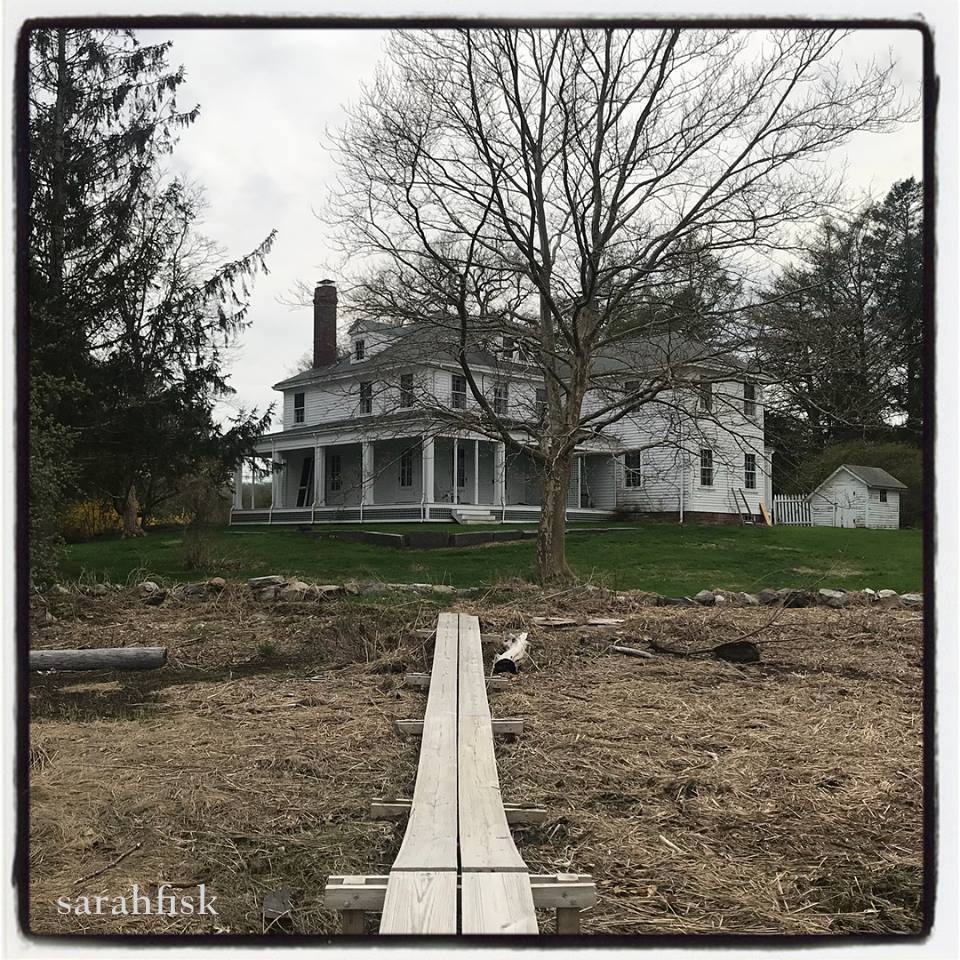I’ve been asked, over the years, where my sense of design comes from. Although I’m a writer now, I was a sweater designer for 15 years and have made a lot of clothing, curtains, rag dolls, and painted quite a few houses inside and out. I’ve been envious of other writers, but nowhere near as keenly as I’ve been envious of people with what I consider exquisite taste. How do they do that? I ask myself. What made them think that would work so well? How can I learn this? I have felt my heart physically ache over the visual beauty other people can create.
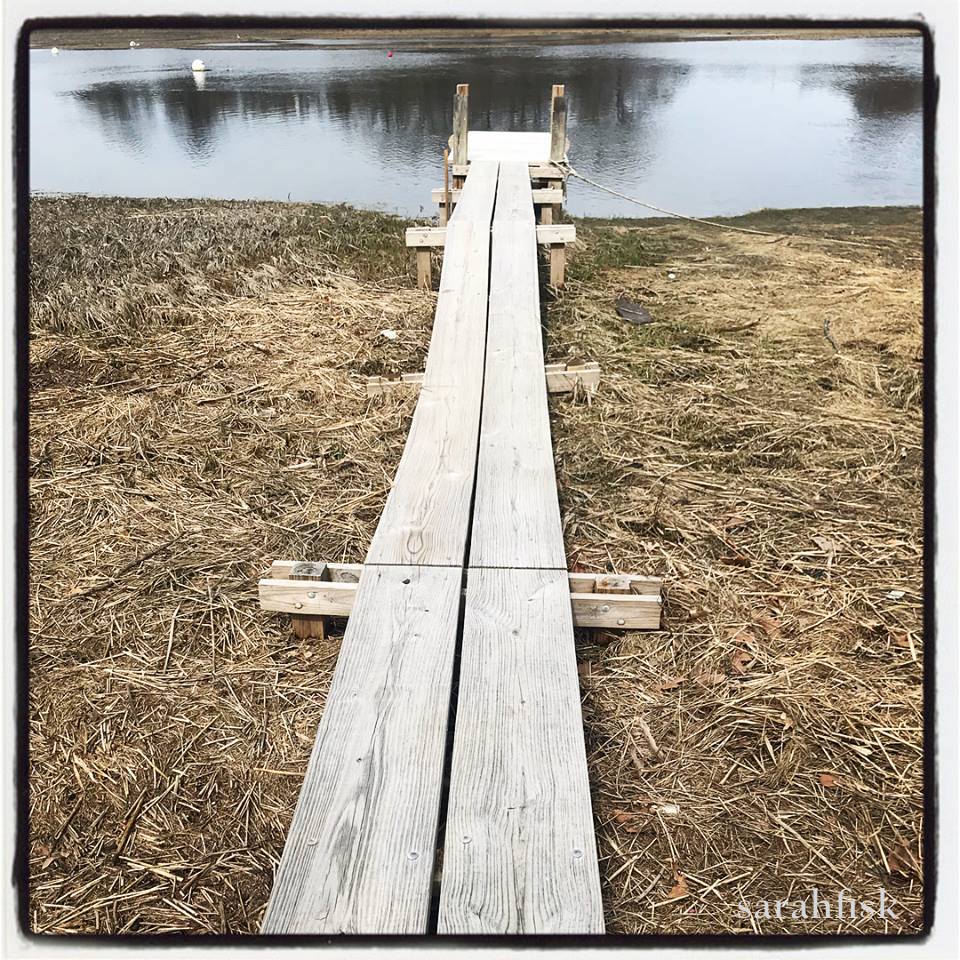
People’s taste develops under all kinds of influences, conscious and not. I think my earliest sense of form came from spending my summers in Ipswich, Massachusetts, in old colonial neighborhoods looking at classic proportions, and at the two houses of my Aunt Mary and Uncle John, filled with a kind of 1960s aesthetic and lots of art.
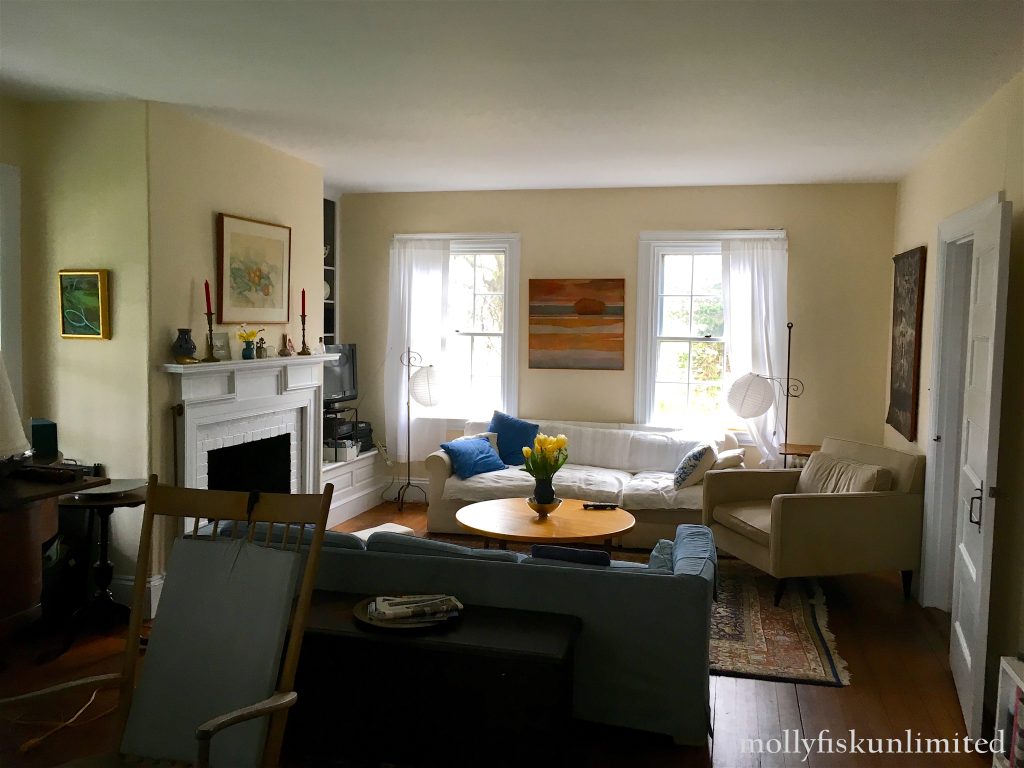
If you’re thinking “Good grief, that’s not a beautiful room,” don’t worry. Beauty really is in the eye of the beholder, and only there. I turned around and took a photo of the dining room from the same place. Those doors open out onto a wrap-around porch that is screened in summer.
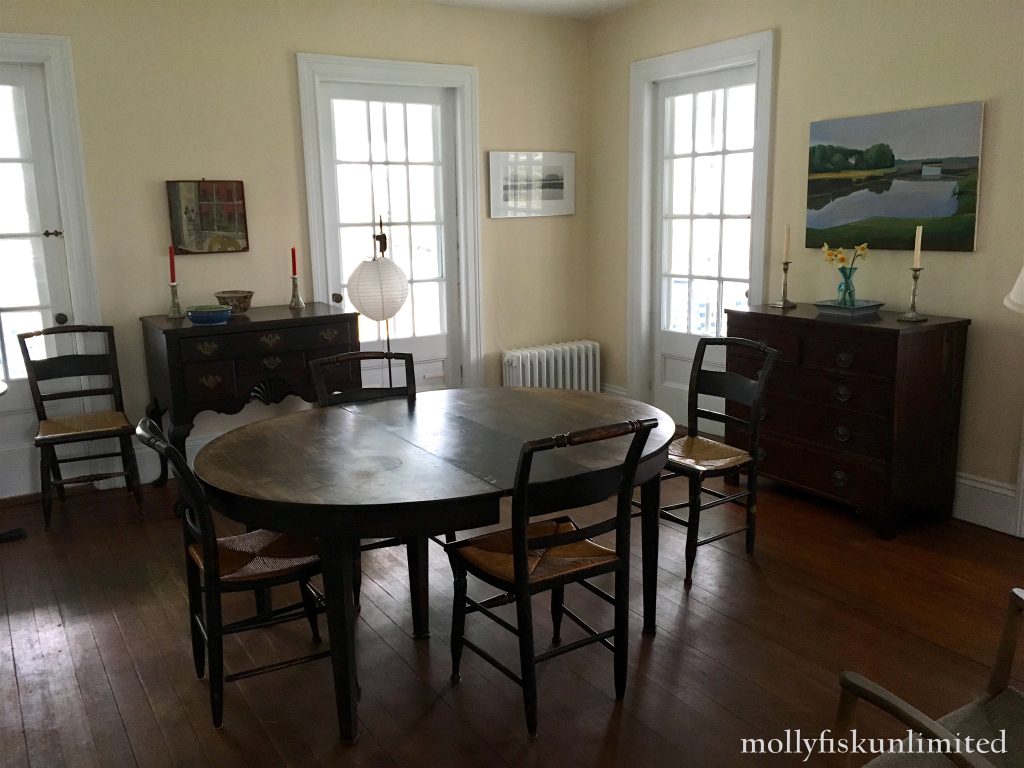
And here’s one of Mary’s first paintings, out a window in Manhattan, that I’ve always loved. It’s hanging in the dining room, over that highboy.
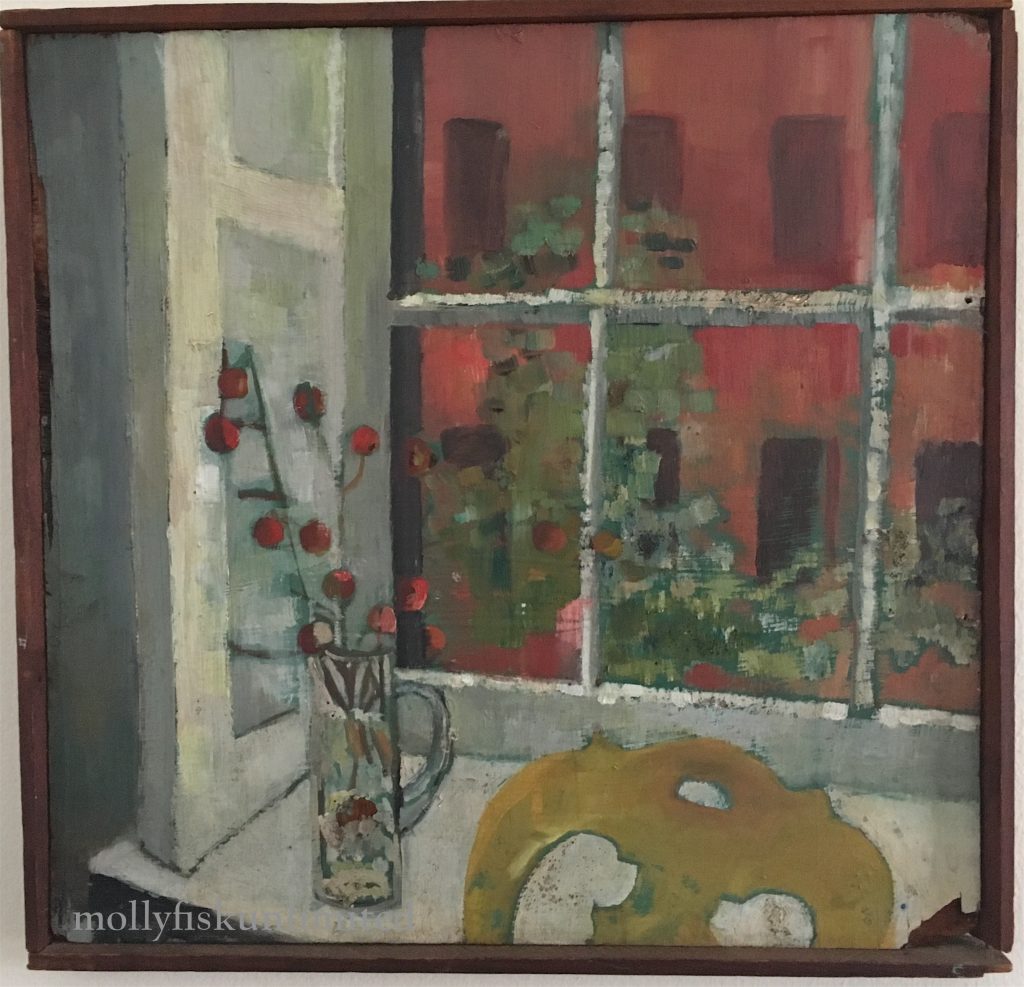
My cousins moved to this house when I was 12, so I’ve been coming to visit for 50 years. During the almost two decades I lived in Massachusetts myself, I spent weekends and holidays and afternoons here, swimming in the creek, running on the road, slapping mosquitoes and shucking corn.
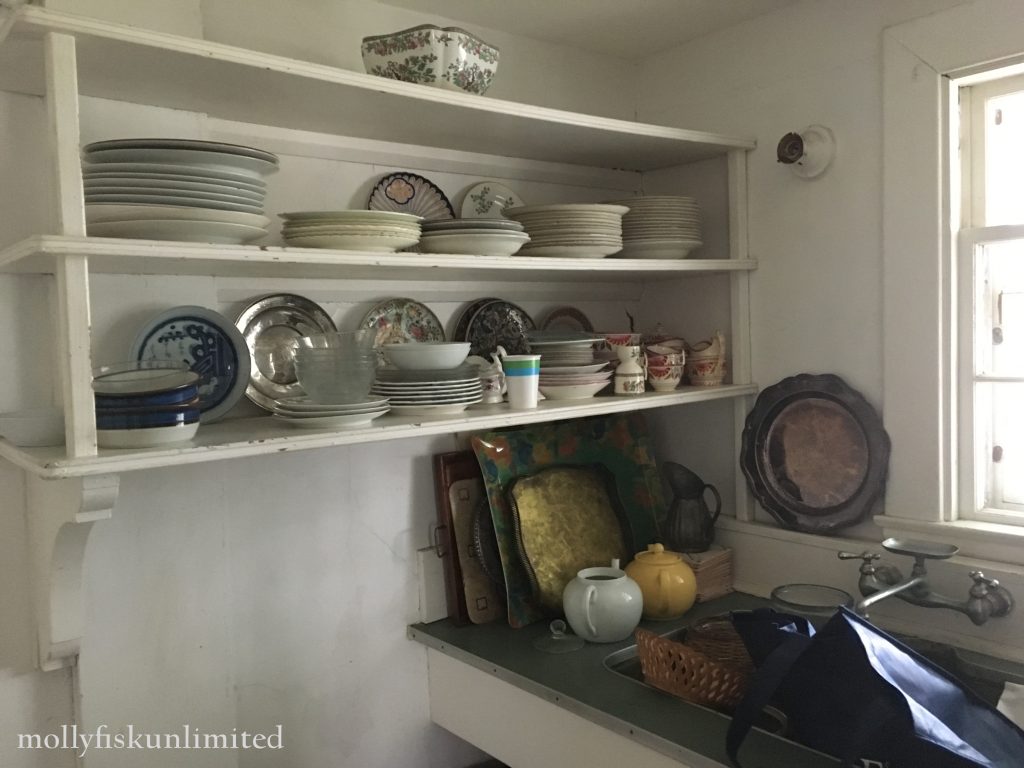
The dishes, and the gin and tonic, have always been in this pantry.
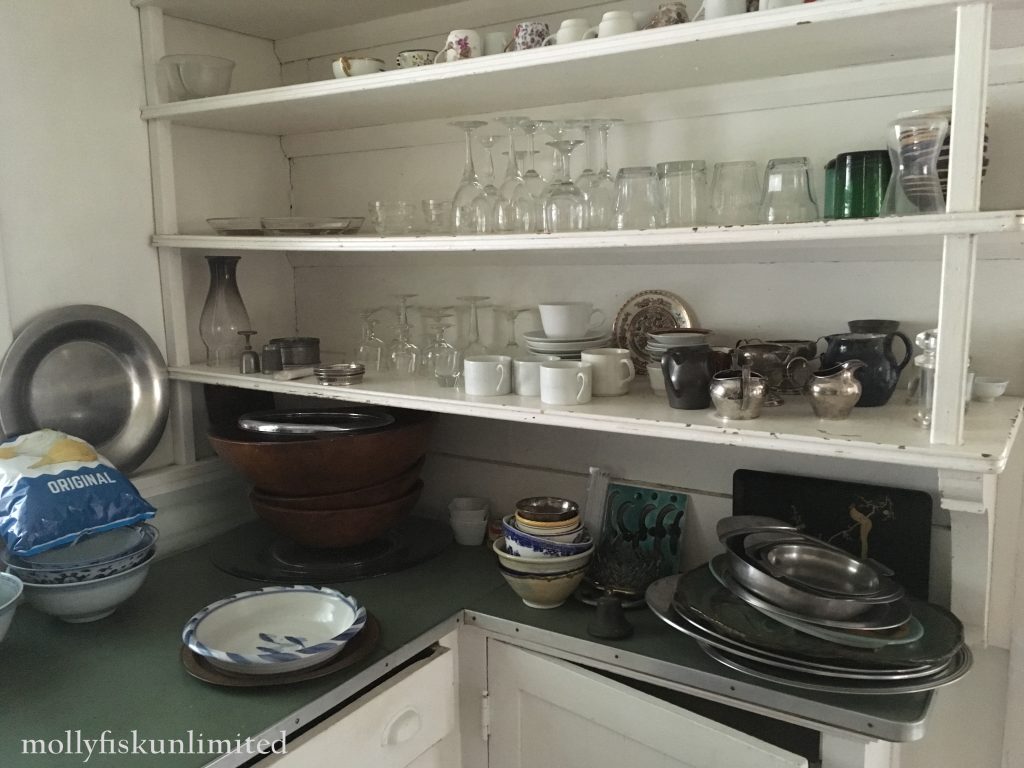
And the weentsy demitasse cups in which Mary served coffee after every dinner (top shelf). I don’t know how we hold places in our minds exactly, which senses are the strongest. When I was there earlier this month for Mary’s memorial, I kept stopping to smell the air, like a deer or a horse. I took these photos so I can remember the place when my cousins eventually sell it, but what moves me more than the shelves and the chairs is how light comes in the windows at certain times of day, and the sound of the creek when the tide turns and sloshes a little as it reorients itself.
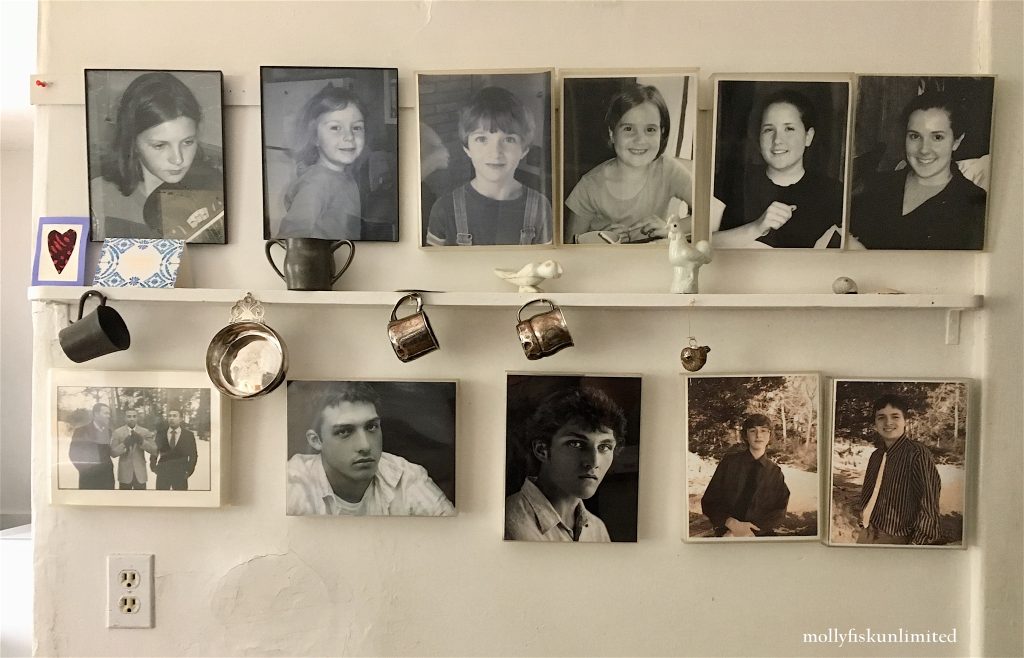
The other thing about this house is that Mary painted in it, and painted the views from it and of it so often that it’s all mixed together in my mind, layers of perspective over the layers of life lived here.
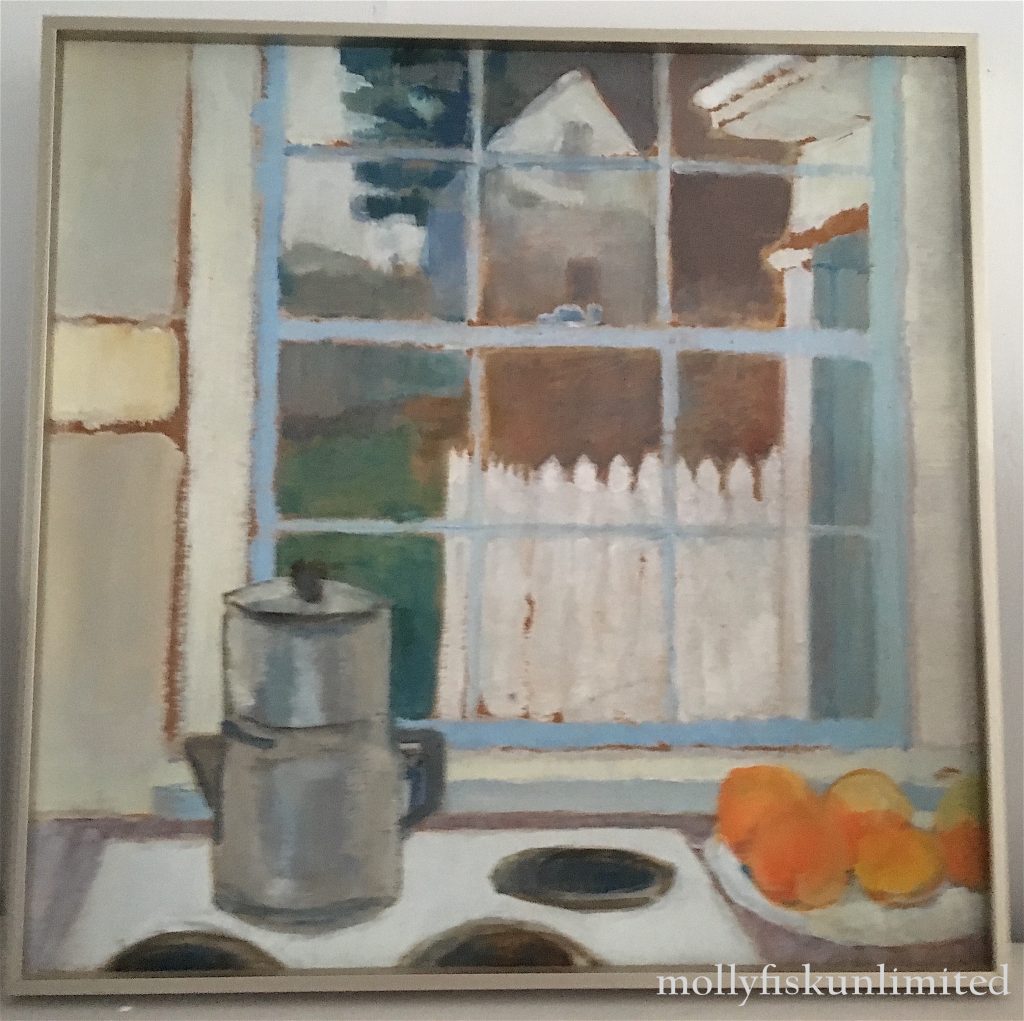
Out the back door, looking right, there’s a view of Gould’s Creek and some kind of pew or round seat whose provenance I never have figured out. Part of the laundry line.
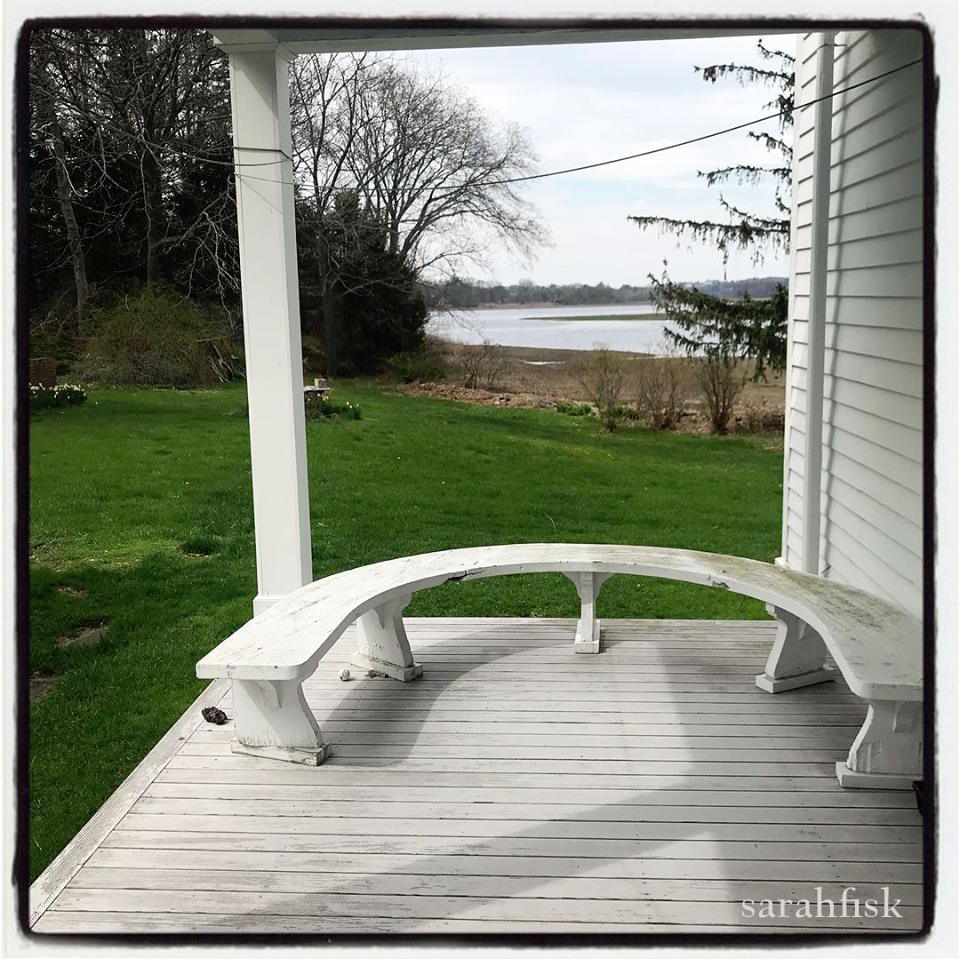
Two more views of the porch on the other side of the house, one hanging in Mary’s front hall, one in her son Michael’s kitchen.
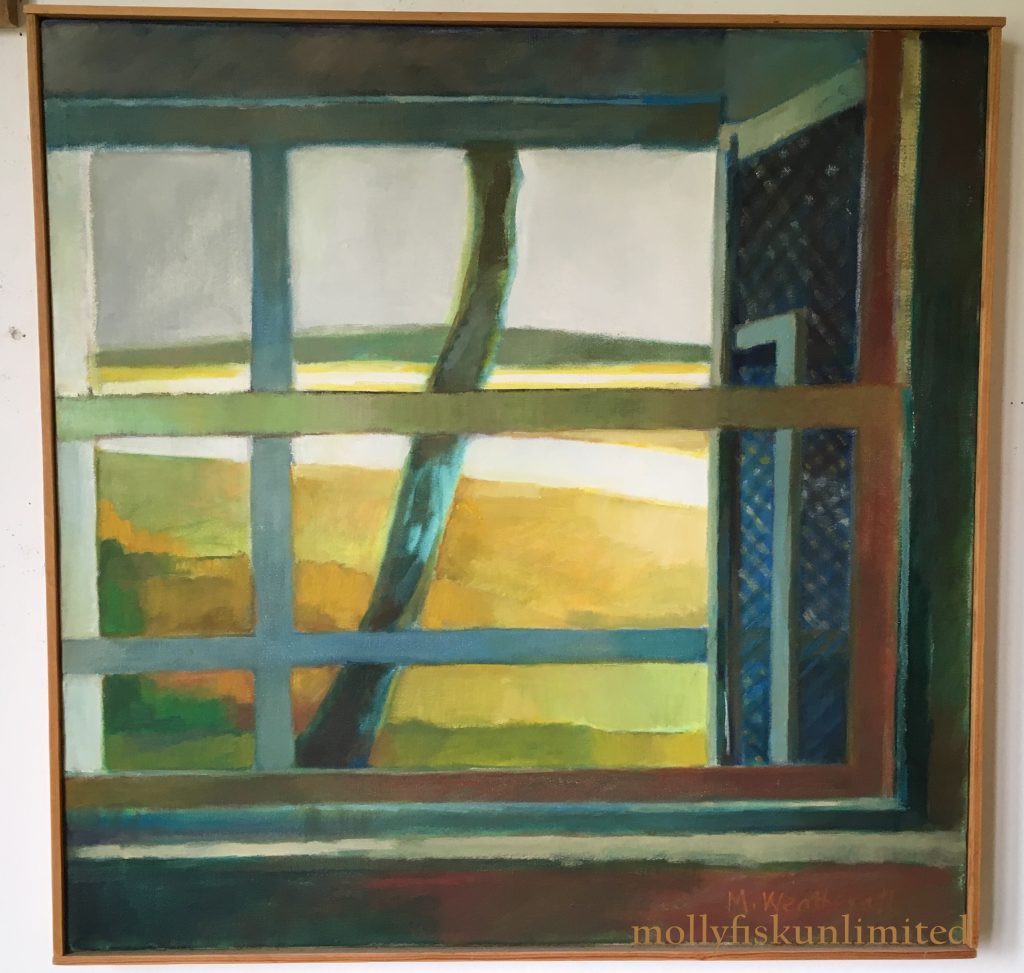
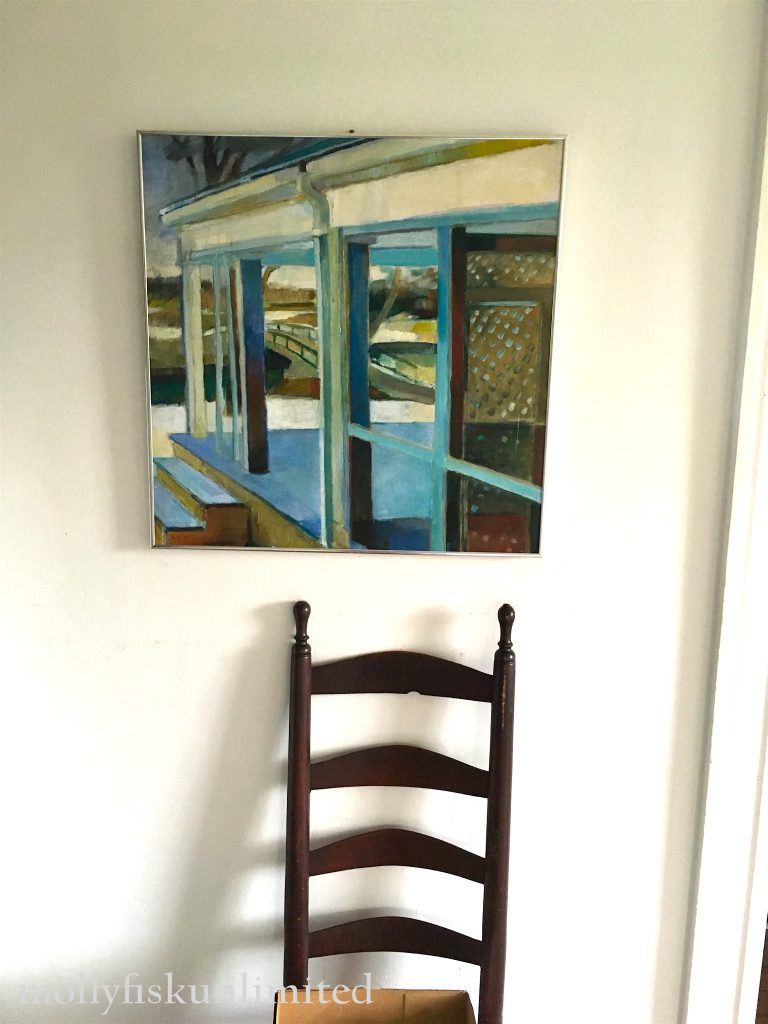
And here’s the corner of the porch itself, three weeks ago on a cloudy day.
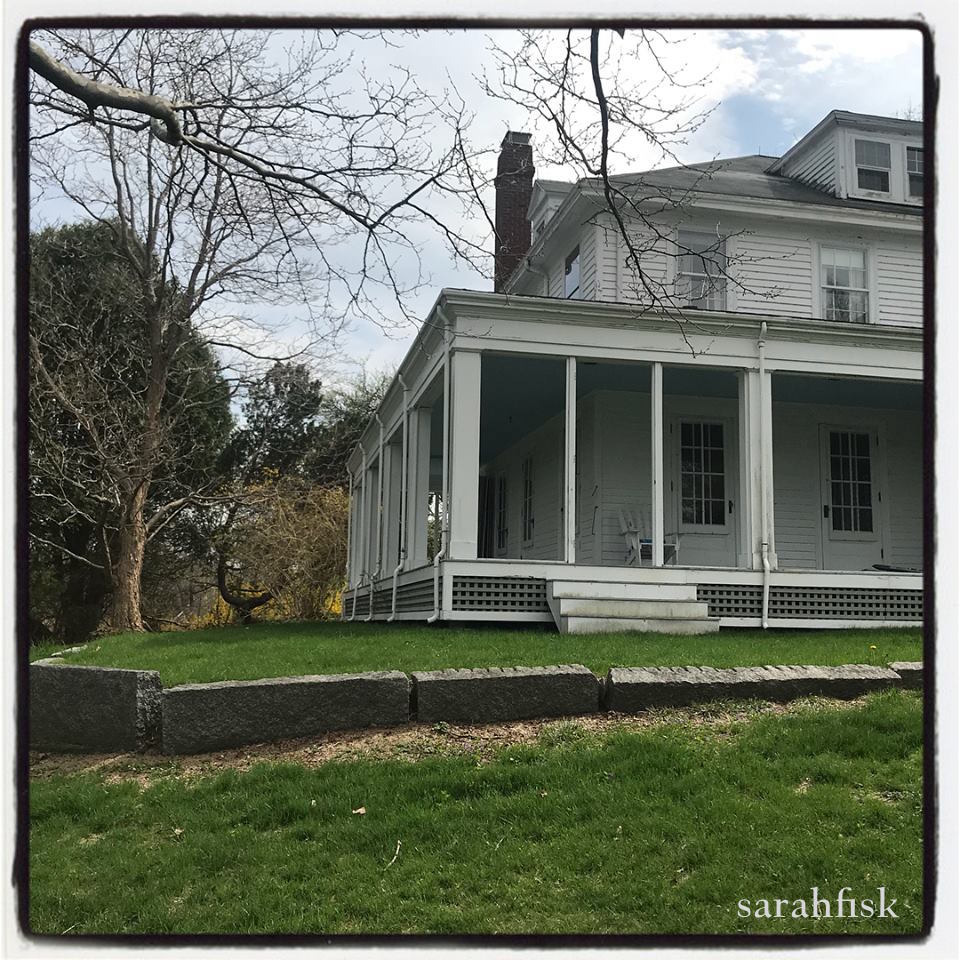
As with many people of our era, once the parents die, it’s not clear what will happen to the family house. My cousins have some work ahead of them to figure this out. One reason three of our four siblings took the long trip east from California was to say goodbye, in case we won’t be able to walk through these rooms again. We also weren’t sure there would be another time when the whole family gathered like this, since Mary was the last in her generation, and we wanted to be there in the throng.
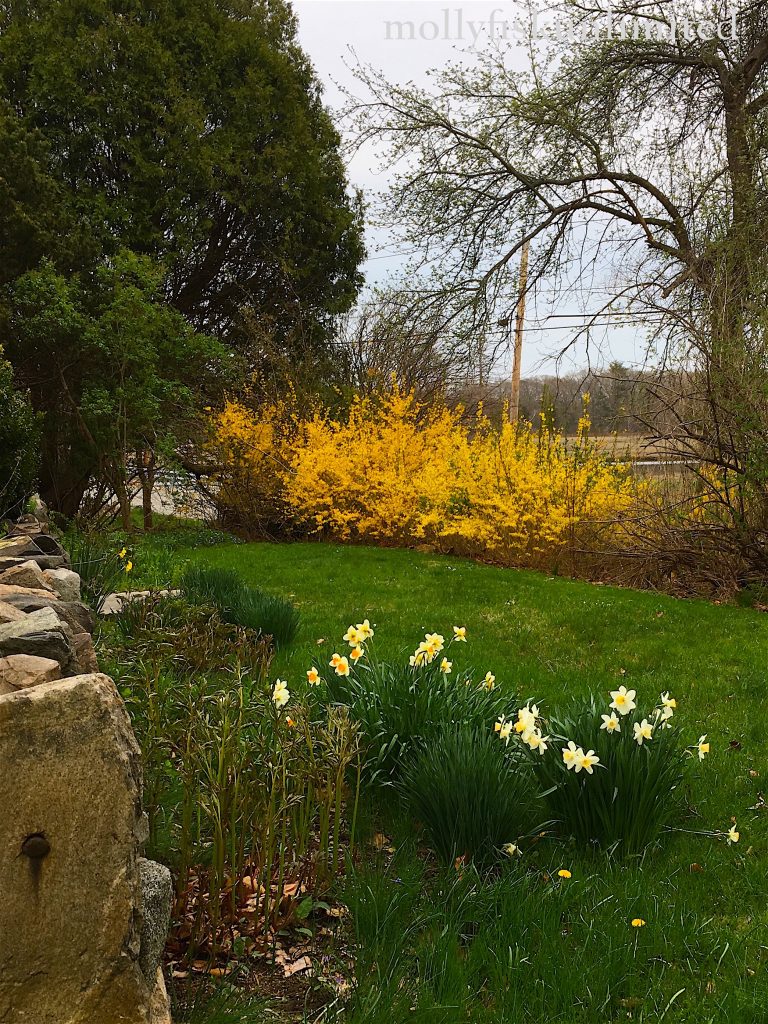
But I am leaving out photos of the throng. These are just of the house, so I (and whoever else wants to) can populate it with memories. The library had two paintings side by side: one by Mary and one by my cousin, her daughter Miranda. I love seeing the similarities of vision and the differences between them.
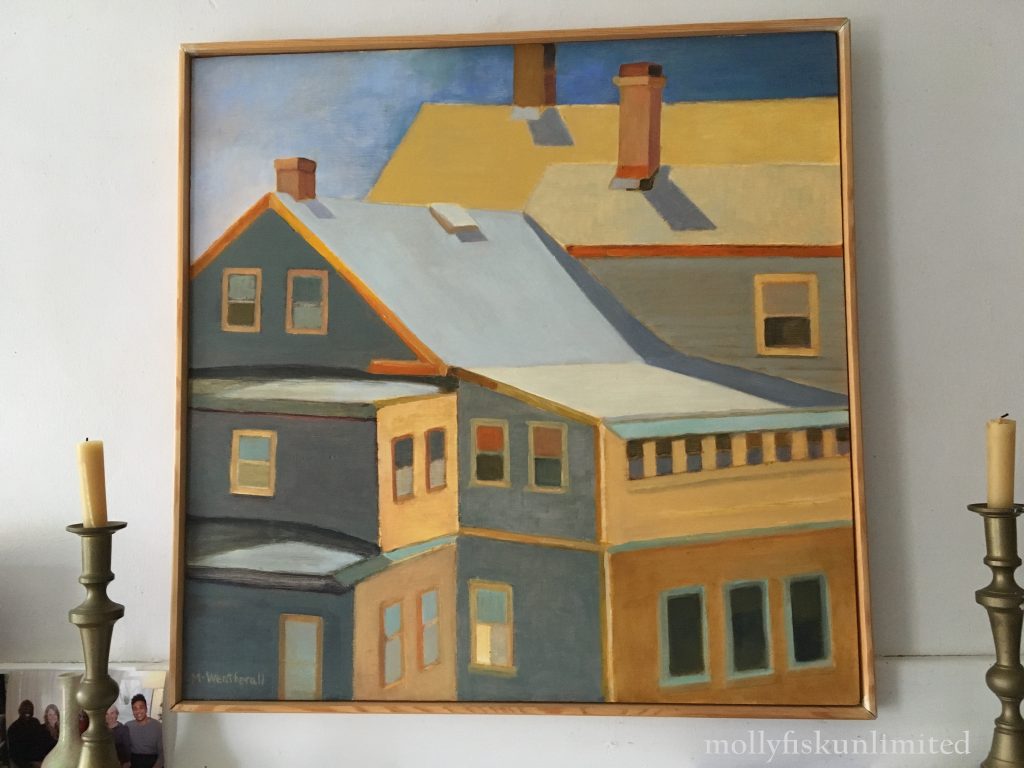
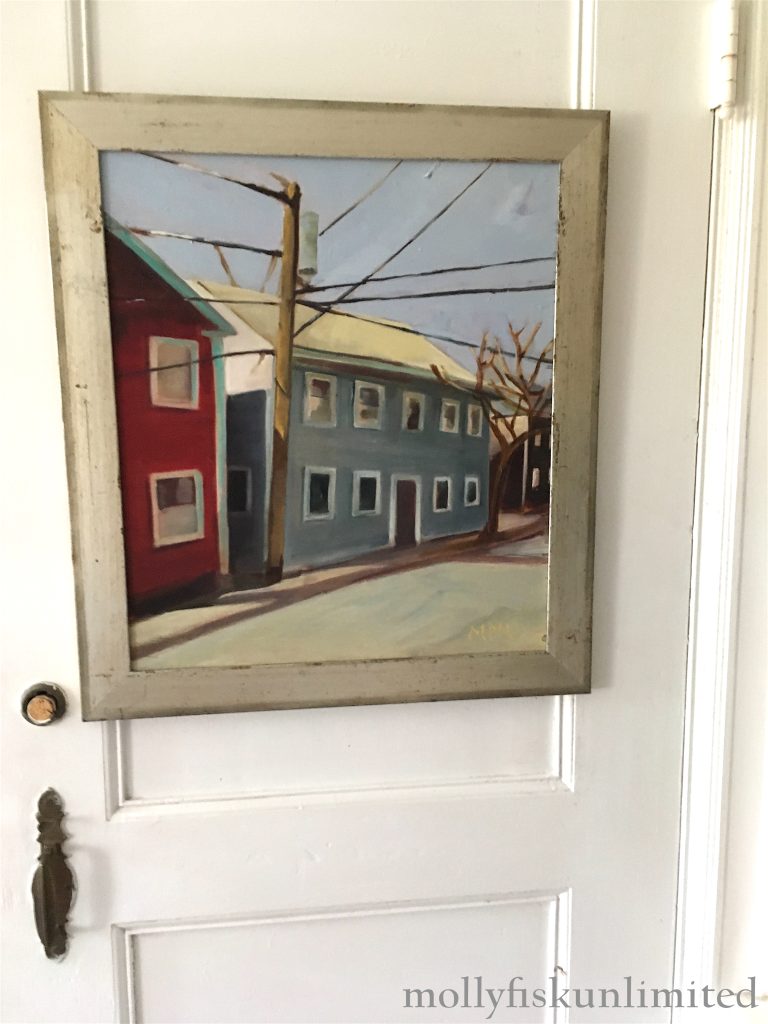
As I’ve said elsewhere, Mary’s work — and Miranda’s, and my mother’s — inspired me to start painting a few years ago. My intention is to honor her memory by renewing my practice — I had stopped for a while to make a sturdier living, but now I can feel the desire to work with shape and color rising in me.
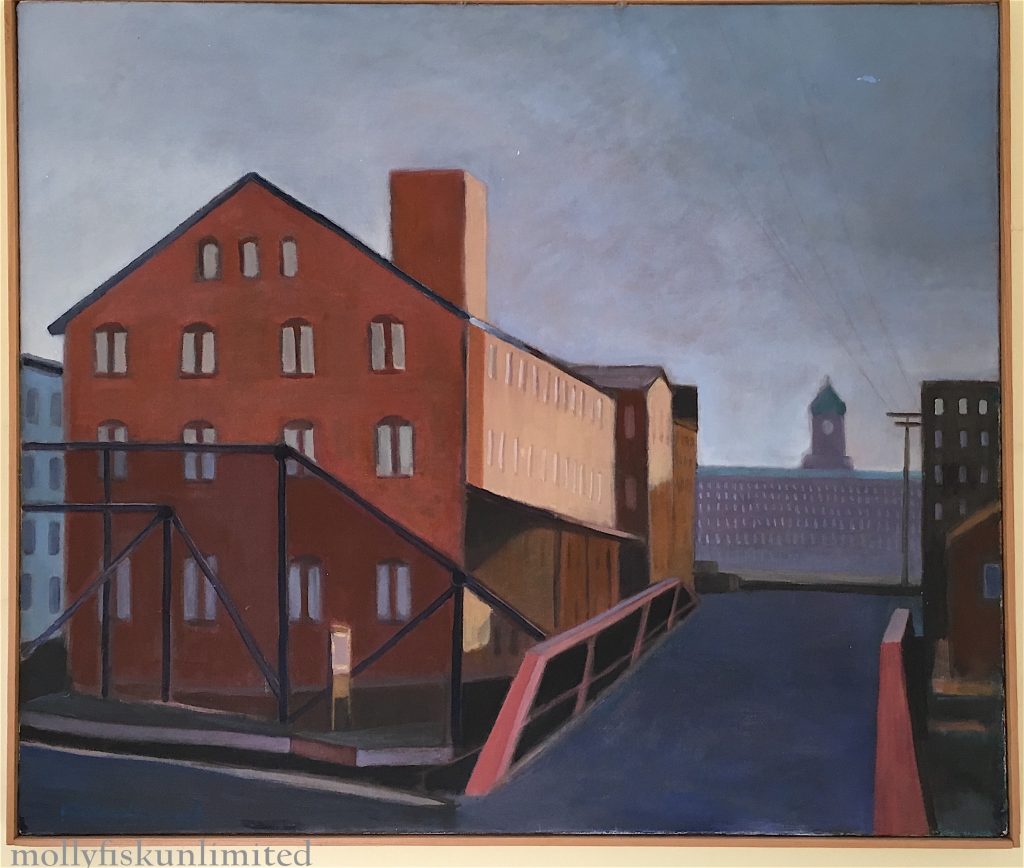
New England, as you know, is full of mill towns and the mills are still standing, even if they’ve been repurposed as high tech firms in some cases. One of the things that has always struck me about Mary’s work is how she manages to make it both geometric and soft. The brick mills, the salt marsh, a window sash: everything is substantial and ephemeral at the same time. Like our lives, I suppose. Like houses themselves.
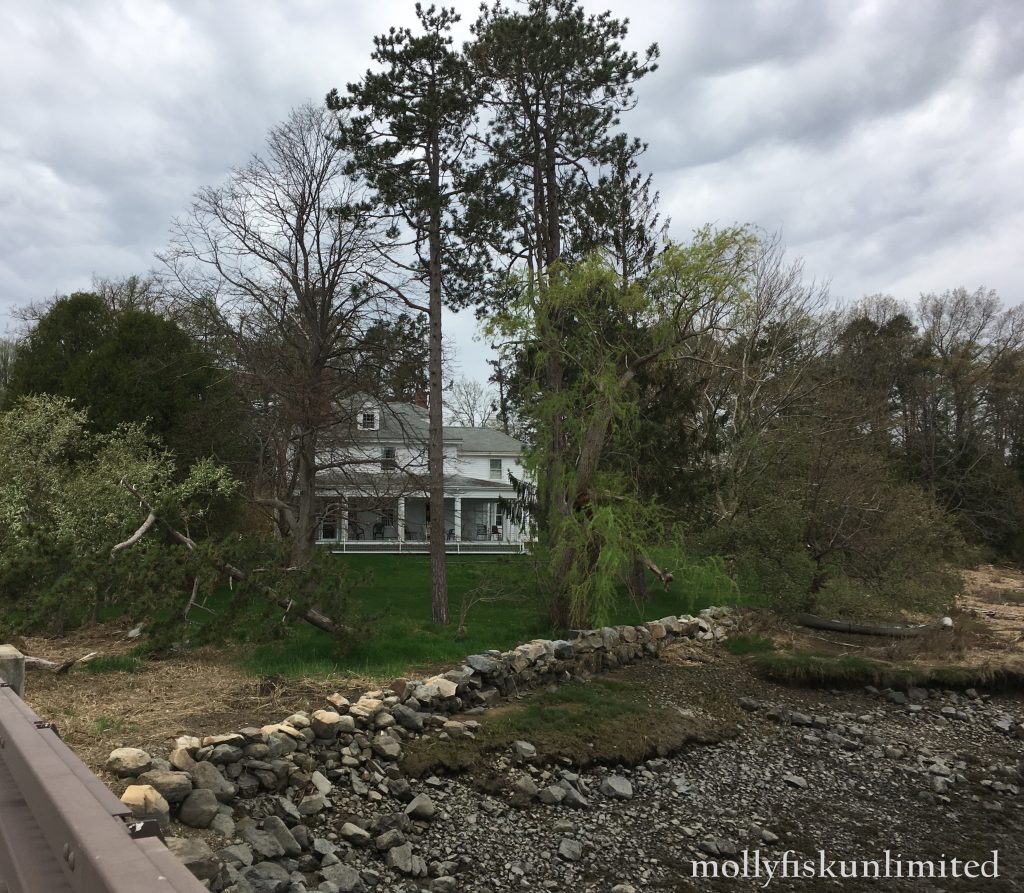
Good-bye, wonderful house. Thank you for being Mary’s refuge and stage, and for holding us all so close for half a century.
